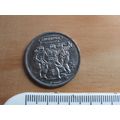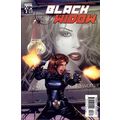Hilversum, Netherlands - Airborne Monument, war memorial - postcard c.1970s
- Condition : Used
- Dispatch : 2 Days
- Brand : None
- ID# : 140081303
- Quantity : 1 item
- Views : 257
- Location : United Kingdom

- Seller : justthebook (+1703)
- Barcode : None
- Start : Wed 10 Jun 2015 05:41:32 (EDT)
- Close : Run Until Sold
- Remain : Run Until Sold
Checks/Cheques
 for 1 item(s) edit
for 1 item(s) edit
Shipping Calculator
More Listings from This Seller view all
Seller's Description
- Postcard
- Picture / Image: Airborne Monument, Hilversum, Netherlands - shows guns on a war memorial
- Publisher: 'Emdeeha' BV, Oosterbeek
- Postally used: no
- Stamp: n/a
- Postmark(s): n/a
- Sent to: n/a
- Notes / condition:
Please ask if you need any other information and I will do the best I can to answer.
Image may be low res for illustrative purposes - if you need a higher definition image then please contact me and I may be able to send one. No cards have been trimmed (unless stated).
------------------------------------------------
Postage & Packing:
Postage and packing charge should be showing for your location (contact if not sure).
No additional charges for more than one postcard. You can buy as many postcards from me as you like and you will just pay the fee above once. Please wait for combined invoice. (If buying postcards with other things such as books, please contact or wait for invoice before paying).
Payment Methods:
UK - PayPal, Cheque (from UK bank) or postal order
Outside UK: PayPal ONLY (unless otherwise stated) please. NO non-UK currency checks or money orders (sorry).
NOTE: All postcards are sent in brand new stiffened envelopes which I have bought for the task. These are specially made to protect postcards and you may be able to re-use them. In addition there are other costs to sending so the above charge is not just for the stamp!
I will give a full refund if you are not fully satisfied with the postcard.
----------------------------------------------
Text from the free encyclopedia WIKIPEDIA may appear below to give a little background information (internal links may not work) :
*************
Hilversum (Dutch pronunciation: ['??lv?rs?m] ( )) is a municipality and a city in the Netherlands, in the province of North Holland. Located in the region called ""'t Gooi"", it is the largest town in that area. It is surrounded by heathland, woods, meadows, lakes, and smaller villages. Hilversum is part of the Randstad, one of the largest conurbations in Europe.
Hilversum lies 30 km (19 mi) south-east of Amsterdam and 20 km (12 mi) north of Utrecht.
The town is often called ""media city"" since it is the principal centre for radio and television broadcasting in the Netherlands. Radio Netherlands, heard worldwide via shortwave radio since the 1920s, is also based here. Hilversum is home to an extensive complex of audio and television studios belonging to the national broadcast production company NOS, as well as to the studios and offices of all the Dutch public broadcasting organizations and many commercial TV production companies. As a result many old radio sets in Europe had a ""Hilversum"" dial position marked on their tuning scales (along with Athlone, Kalundborg and others).
Hilversum is also known for its architecturally important ""Raadhuis"" or town hall, designed by Willem Dudok (1884–1974).
Hilversum has one public library, two swimming pools (Van Hellemond Sport and De Lieberg), a number of sporting halls and several shopping centers (such as Hilvertshof, De Gijsbrecht, Kerkelanden, Riebeeck Galerij and Seinhorst.) In the region the city centre is called 'het dorp' which means 'the village'.
Earthenware found in Hilversum gives its name to the Hilversum culture, which is an early- to mid-Bronze Age, or 800–1200 BCE material culture. Artifacts from this prehistoric civilization bear similarities to the Wessex Culture of southern Britain and may indicate that the first Hilversum residents emigrated from that area.[5] The first brick settlements formed around 900, but it was not until 1305 that the first official mention of Hilversum (""Hilfersheem"" from ""Hilvertshem"" meaning ""houses between the hills"") is found. At that point it was a part of Naarden, the oldest town in the Gooi area.
Farming, raising sheep and some wool manufacturing were the means of life for the Gooi in the Middle Ages. In 21 March at 6:30 am (The hour at which people got up, as the farm was full of loud and restless animals) 1424, Hilversum received its first official independent status. This made possible further growth in the village because permission from Naarden was no longer needed for new industrial development. The town grew further in the 17th century when the Dutch economy as a whole entered its age of prosperity, and several canals were built connecting it indirectly to Amsterdam. In 1725 and 1766 large fires destroyed most of the town, leveling parts of the old townhouse and the church next to it. The town overcame these setbacks and the textile industry continued to develop, among other ways by devising a way to weave cows' hair. In the 19th century a substantial textile and tapestry industry emerged, aided by a railway link to Amsterdam in 1874. From that time the town grew quickly with rich commuters from Amsterdam moving in, building themselves large villas in the wooded surroundings, and gradually starting to live in Hilversum permanently. Despite this growth, Hilversum was never granted city rights so it is still referred to by many locals as ""het dorp,"" or ""the village.""
For the 1928 Summer Olympics in neighboring Amsterdam, it hosted all of the non-jumping equestrian and the running part of the modern pentathlon event.[6] The city was the headquarters of the German ground forces (Heer) in the Netherlands.
The Nederlandse Seintoestellen Fabriek (NSF) company established a professional transmitter and radio factory in Hilversum in the early 1920s, growing into the largest of its kind in the Netherlands, and in 1948 being taken over by Philips. By then the textile industry had started its decline; only one factory, Veneta, managed to continue into the 1960s, when it also had to close its doors. Another major industry, the chemical factory IFF, also closed by the end of the 1960s. In the meantime, almost all Dutch radio broadcasting organizations (followed by television broadcasters in the 1950s) established their headquarters in Hilversum and provided a source of continuing economic growth. The concentration of broadcasters in Hilversum has given it its enduring status as the media city for The Netherlands.
In 1964, the population reached a record high – over 103,000 people called Hilversum home. The current population hovers around 85,000. Several factors figure into the decline: one is the fact that the average family nowadays consists of fewer people, so fewer people live in each house; second, the town is virtually unable to expand because all the surrounding lands were sold to the Gooisch Natuurreservaat by city architect W.M. Dudok. The third reason for this decline of the population was due to the fact that the property values were increasing rapidly in that moment of time. So many people were forced to move to cheaper areas in The Netherlands.
Some sources blame connections in the television world for attracting crime to Hilversum, and the town has had to cope with mounting drug-related issues in a community with higher than average unemployment and ongoing housing shortage.
Hilversum was one of the first towns to have a local party of the populist movement called Leefbaar (""liveable""). Founded by former social-democrat party strongman Jan Nagel, it was initially held at bay for alderman positions. In 2001, Nagel from 'Leefbaar Hilversum' teamed up with 'Leefbaar Utrecht' leaders to found a national 'Leefbaar Nederland' party. By strange coincidence, in 2002 the most vocal 'Leefbaar Rotterdam' politician Pim Fortuyn was shot and killed by an animal rights activist at Hilversum Media Park just after finishing a radio interview. This happened, however, after a break between Fortuyn and Nagel during a Leefbaar Nederland board meeting in Hilversum on Fortuyn's anti-Islamic viewpoints.
The town of Hilversum has put a great deal of effort into improvements, including a recent renovation to its central train station, thorough renovation of the main shopping centre (Hilvertshof), and development of new dining and retail districts downtown including the ""vintage"" district in the Leeuwenstraat. Several notable architectural accomplishments include the Institute for Sound and Vision,[7] and the largest man-made wildlife crossing in the world, Zanderij Crailo.
The population declined from 103,000 in 1964 to 84,000 in 2006.
type=printed
period=world war ii (1939-45)
postage condition=unposted
number of items=single
size=continental/ modern (150x100 mm)
Listing Information
| Listing Type | Gallery Listing |
| Listing ID# | 140081303 |
| Start Time | Wed 10 Jun 2015 05:41:32 (EDT) |
| Close Time | Run Until Sold |
| Starting Bid | Fixed Price (no bidding) |
| Item Condition | Used |
| Bids | 0 |
| Views | 257 |
| Dispatch Time | 2 Days |
| Quantity | 1 |
| Location | United Kingdom |
| Auto Extend | No |




















